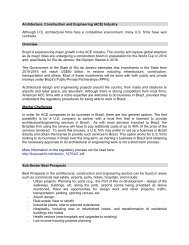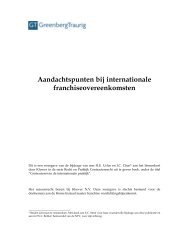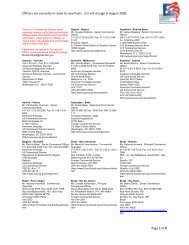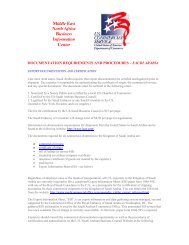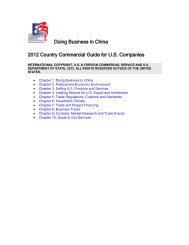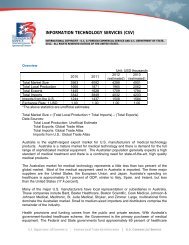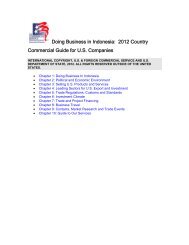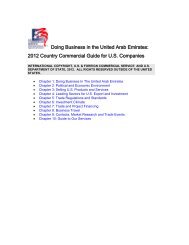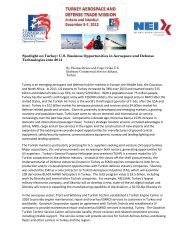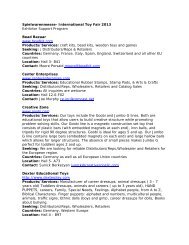Healthcare Technologies Resource Guide - Export.gov
Healthcare Technologies Resource Guide - Export.gov
Healthcare Technologies Resource Guide - Export.gov
You also want an ePaper? Increase the reach of your titles
YUMPU automatically turns print PDFs into web optimized ePapers that Google loves.
Main Competitors<br />
Imports supply approximately 80 percent of Australia’s demand for medical equipment. Key suppliers<br />
include the United States, the European Union, Switzerland, and Japan. Many suppliers in the Australian<br />
industry are subsidiaries of overseas corporations. The major American medical companies represented<br />
in Australia (either through local representatives or subsidiary offices) include Bard, Baxter <strong>Healthcare</strong>,<br />
Boston Scientific, Cook Medical, Johnson & Johnson Medical, Medtronic, St. Jude Medical, Stryker, and<br />
Zimmer. U.S. companies may experience strong competition from American firms or multinationals<br />
already in the market.<br />
Current Demand<br />
Australia’s high standard of medical practice and aging population underpin a continued demand for<br />
a range of sophisticated, high quality, and innovative medical equipment. Importers seek to source<br />
cost-effective and innovative products that will improve patient outcomes and reduce healthcares<br />
cists. Opportunities exist for products that provide a significant improvement in clinical outcomes, and<br />
product with clearly differentiated capabilities. There is also a growing demand for products that lead to<br />
faster patient recovery, reduce hospital and rehabilitation costs, and alleviate or manage disability and<br />
chronic pain.<br />
Government healthcare policies and public health influence the volume and pricing of healthcare<br />
products and services. Both the public and private sectors provide healthcare in Australia. Federal<br />
and State <strong>gov</strong>ernment spending accounts for 70 percent of total healthcare expenditure. The non<strong>gov</strong>ernmental<br />
sector (individuals and private health insurance) funds are the remaining 30 percent.<br />
Approximately 45 percent of Australians have private health insurance.<br />
Registration Process<br />
The Therapeutic Goods Administration (TGA) regulates the medical equipment industry. Australia’s<br />
regulatory framework is based on Global Harmonization Task Force (GHTF) and European Community<br />
guidelines. U.S. exporters must appoint an Australian representative/sponsor to obtain regulatory<br />
approval from the TGA. U.S.-manufactured medical devices require an EC Certificate from a European<br />
Union Notified Body. Alternatively, U.S. manufacturers can apply to the TGA for a Conformity Assessment<br />
Certificate.<br />
Further information is available at tga.<strong>gov</strong>.au.<br />
Trade Events<br />
AusBiotech 2012<br />
October 30–November 2, 2012 • Melbourne Convention & Exhibition Centre • ausbiotechnc.org<br />
AusBiotech 2013<br />
October 29–November 1, 2013 • Brisbane Convention & Exhibition Centre • ausbiotechnc.org<br />
U.S. Commercial Service <strong>Healthcare</strong> <strong>Technologies</strong> <strong>Resource</strong> <strong>Guide</strong> | 2012–2013<br />
5



